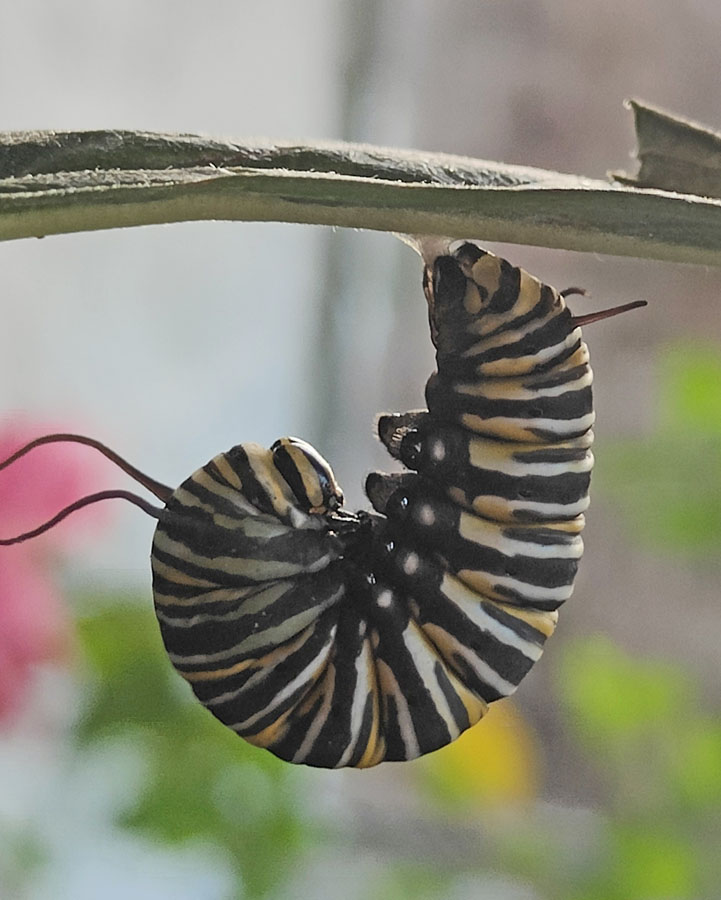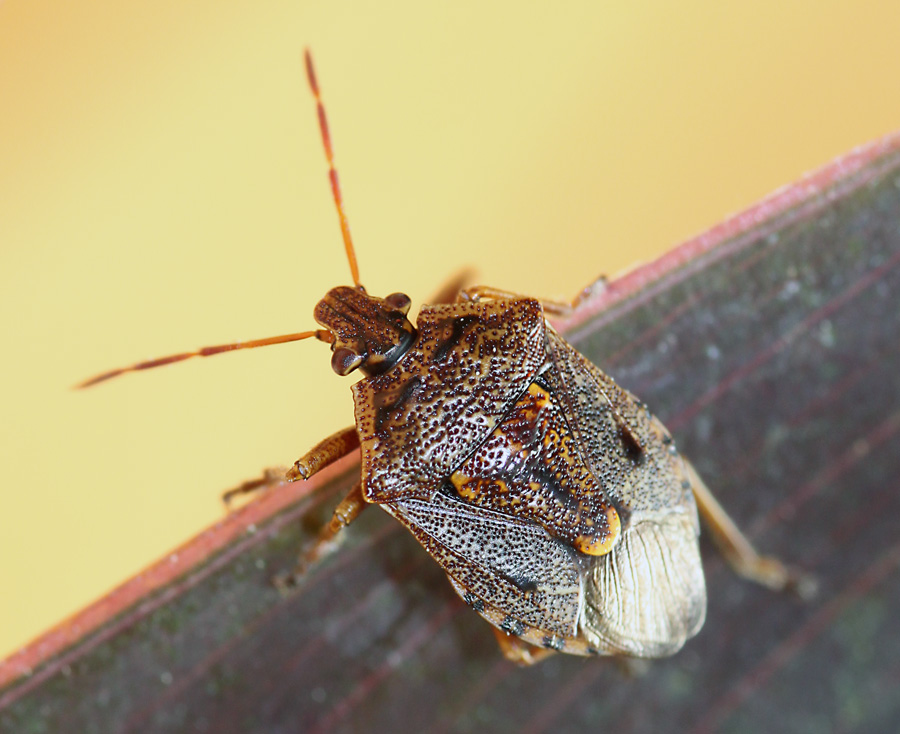Lots of panic questions about Monarchs this year: in Auckland they are recorded as “pretty rare”, whereas in Christchurch I see them quite regularly and they’re doing fine in my garden.
There are always some troubles with wasps. These predators are quite keen to chew the monarch caterpillars to pieces and take the protein back to the wasp nest as food for their larvae.
It sounds awful and it looks awful; the common-German wasps (and Paper wasps) are, after all, imported pests that don’t belong here.
Keep your plants with caterpillars under netting; the wasps can not access them. Another trick is to grow your swan plants in large pots, which can be moved to new sites when wasps discover the precious cargo; the wasp’s GPS system is disrupted when you change the position of the swan plants.
Running out of food is often bad news – caterpillars starving

Always keep an extra plant or two under curtain netting, so female monarchs can’t lay eggs on those spare food plants!!
It also pays to reduce the number of eggs/caterpillars per plant (birth-control)
I must confess: I had some trouble managing the number of caterpillars this year: they we sometimes eating the tops of the naked swanplants… and in pairs!!
I tend to keep my caterpillars inside the tunnel house, so that the female monarchs couldn’t get at them to lay more and more eggs
“Go Fly to Auckland and Do something with your Life” is what I usually say…
Sometimes caterpillars are found limp and dying
This is often caused by predation by brown soldier bugs (Cermatulus nasalis) who stick their sucking tubes into the caterpillars and slowly such them dry.
Look for the soldier bugs (brown version of the garden stink bug!!) and get rid of them!

Accidents do happen, especially when the last instar caterpillar does its very last change from Caterpillar to Chrysalis.
That in itself is a tricky manoeuvre: the caterpillar hangs from a small patch of silk while it takes its skin of. The trick is then to hook its chrysalis “claws” into the same white silken pad, so it can hang there as long as it takes to change into an adult butterfly.
There are a few videos that capture the way a caterpillar becomes a chrysalis; have a look at how the caterpillar manages that without falling.
But sometimes things go horribly wrong and if you discover a fallen chrysalis soon after the accident happened, you can carefully pick that very fragile creature up and literally hang it back where it needs to be…
Very delicate “First Aid”
Take your Radio, Podcasts and Music with you










